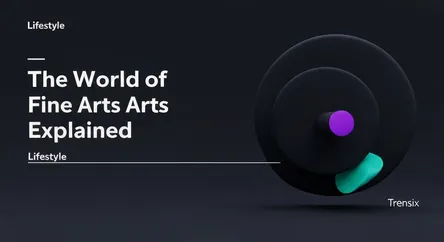Lifestyle
The World of Fine Arts Explained

Discover fine arts, from painting and sculpture to music and dance. Learn why these forms of creative expression are timelessly relevant.
What is it?
Fine arts are forms of creative expression developed primarily for aesthetic or intellectual purposes rather than for practical, functional use. Historically, the five main fine arts were painting, sculpture, architecture, music, and poetry, with performing arts like theatre and dance also included. Unlike applied arts, which focus on utility (like graphic design or ceramics), fine arts aim to engage the senses, emotions, and intellect. They are the product of human skill and imagination, intended to be beautiful or emotionally powerful, offering a unique window into the human experience and different cultures throughout history.
Why is it trending?
Fine arts are perpetually relevant because they serve as a powerful medium for self-expression and cultural commentary. In an increasingly digital world, there's a renewed appreciation for tangible skills and the emotional connection that art provides. Social media platforms like Instagram and TikTok have democratized art, allowing new artists to gain global visibility and making art more accessible than ever. Furthermore, as societies focus more on mental well-being, engaging with art—both creating and appreciating it—is recognized as a therapeutic and enriching activity that fosters creativity and mindfulness.
How does it affect people?
Fine arts profoundly affect individuals and society by fostering critical thinking, empathy, and cultural understanding. Engaging with art challenges our perceptions and encourages us to interpret the world from different viewpoints. For creators, it's a vital outlet for expressing complex ideas and emotions. For audiences, it can inspire awe, spark conversation, and provide comfort or a sense of connection. It enriches communities by preserving cultural heritage, beautifying public spaces, and providing a shared language that transcends barriers, ultimately contributing to a more vibrant and emotionally intelligent society.